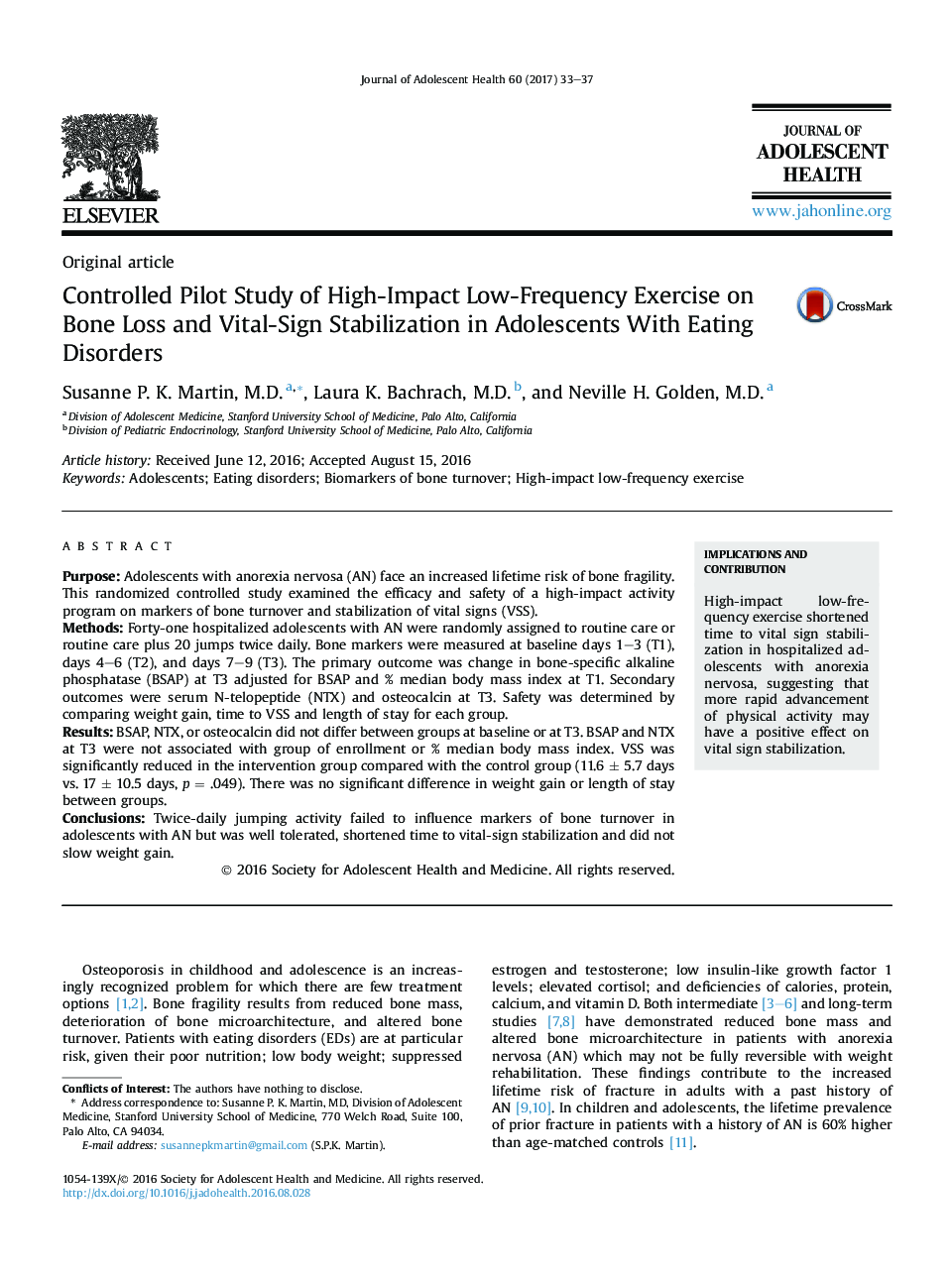| Article ID | Journal | Published Year | Pages | File Type |
|---|---|---|---|---|
| 5121366 | Journal of Adolescent Health | 2017 | 5 Pages |
PurposeAdolescents with anorexia nervosa (AN) face an increased lifetime risk of bone fragility. This randomized controlled study examined the efficacy and safety of a high-impact activity program on markers of bone turnover and stabilization of vital signs (VSS).MethodsForty-one hospitalized adolescents with AN were randomly assigned to routine care or routine care plus 20 jumps twice daily. Bone markers were measured at baseline days 1-3 (T1), days 4-6 (T2), and days 7-9 (T3). The primary outcome was change in bone-specific alkaline phosphatase (BSAP) at T3 adjusted for BSAP and % median body mass index at T1. Secondary outcomes were serum N-telopeptide (NTX) and osteocalcin at T3. Safety was determined by comparing weight gain, time to VSS and length of stay for each group.ResultsBSAP, NTX, or osteocalcin did not differ between groups at baseline or at T3. BSAP and NTX at T3 were not associated with group of enrollment or % median body mass index. VSS was significantly reduced in the intervention group compared with the control group (11.6 ± 5.7 days vs. 17 ± 10.5 days, p = .049). There was no significant difference in weight gain or length of stay between groups.ConclusionsTwice-daily jumping activity failed to influence markers of bone turnover in adolescents with AN but was well tolerated, shortened time to vital-sign stabilization and did not slow weight gain.
